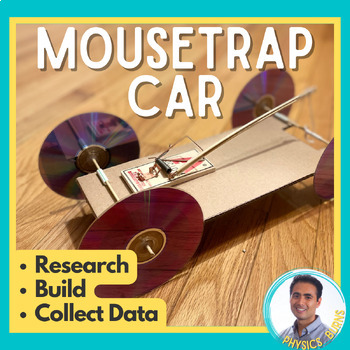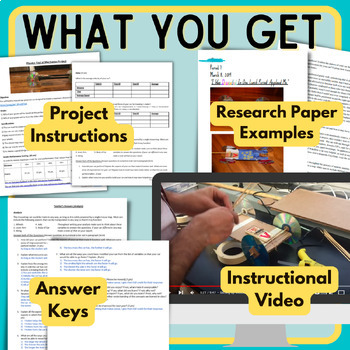Mouse Trap Car Project: Energy and Motion | Physics and Engineering
- Zip
What educators are saying
Also included in
- Here are all the projects that I do with my Regular, Honors, and AP Students. Each project comes with worksheets that are differentiated depending on your level of student. Each of these projects can be done without any calculations, however it was intentionally made for students that have a basic uPrice $39.99Original Price $51.63Save $11.64
Description
There is nothing better to solidify the students understanding of Energy than to have them build and test out their mouse trap cars. Many times, students look forward to this project all year. This project allows students to visualize how elastic potential energy converts to kinetic energy. Students are always astonished to see concepts they are learning about come to life as we work on this project.
Even though I allow the students to build the mouse trap car however they like, I have included an instructional video showing how to make a mouse trap using my design. You might want to use this video because I show how to make the car in the simplest andeasiest way with everyday materials.
Materials:
Glue (Preferably Hot Glue Gun)
Cardboard
Bamboo Skewer
Mouse Trap
Straws
CD's (optional)
Students Will:
- Build a working mouse trap car (Video instruction included)
- Test out their mouse trap cars
- Write a report on how the mouse trap car works and the physics behind it
Lab Includes (Fully Editable):
- Questions to Guide Research Paper
- Rubric for the Research Paper
- Examples of Well-Written Research Papers
- Teacher’s answers and instructions
- An instructional video with tips
______________________________________________________________________________________________
Save Over 20% Project Bundle:
Physics and Engineering Project Bundle ________________________________________________________________________________________
Check out my Youtube Channel, Facebook Group, and Follow my Store :)
If this product could really benefit your classroom, but you are not in a good financial situation to buy the product, please contact me and I will give you the product for free, no questions asked. Raymondburnseducator@gmail.com






